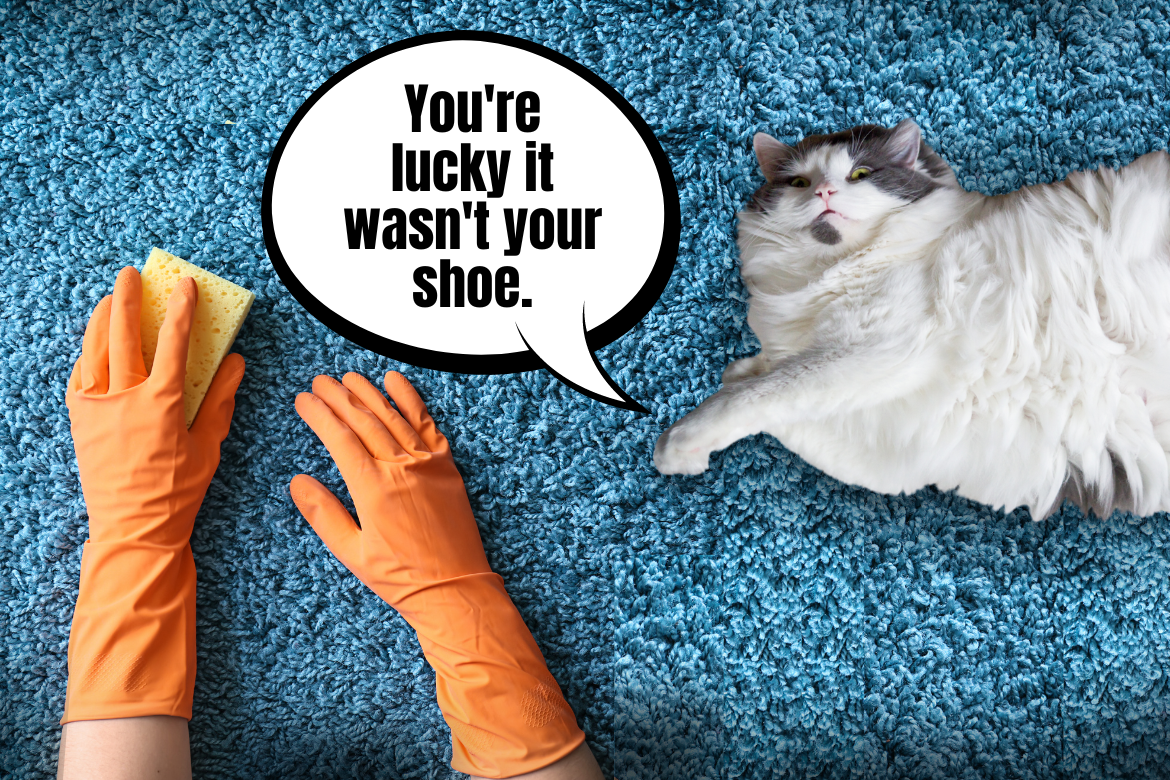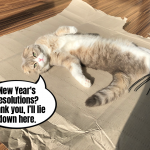A smelly oopsie? No worries, cat – it happens to the best of felines! A poop carried out of the litter box on your pantaloons unnoticed and squished down onto the couch, a wet incident on the bedroom mattress, a dinner thrown up in the middle of the rug because the food decided to leave the cat’s body out the wrong end this time – living with cats, we must be ready for any circumstances and cleaning up stains from cat oopsies is just one of the tasks on the fabCat Carer’s TO DO list. How to effectively clean the stains and remove the nasty smells? Today we’re talking about all the tried and true tips and tricks that every fabCat should have in their arsenal. Let’s start!
The biting smell of cat urine – how to get rid of it effectively?
The crown in the ranking for the toughest things to clean after a cat goes to cat urine. Why? Because even if we dry it up immediately, the smell tends to be quite annoying and if we have unneutered cats, the situation can be even more unbearable. How to get rid of the cat urine smell from the couch, the rug, and other surfaces that are not the actual litter box?
ACT QUICKLY
To fight the smell of cat urine, time is of the essence – if you notice a wet puddle on the floor, the rug, your couch, or inside your shoe, try to dry it out with paper towels as soon as possible. Don’t rub the surface! When it comes to cat urine, we want to avoid spreading the wetness around so don’t rub it – place the paper towels on top of it and blot it, letting the paper towel soak in as much of the dampness as possible.
COLD WATER + AT-HOME SOLUTIONS
Just so you don’t intensify the smell of cat urine, clean the spots with cold water mixed with natural, at-home solutions, not strong detergents. The latter can not only intensify the smell of ammonia in the urine, but they can also destroy the surface of your furniture/the couch/the rug. And let’s not forget that most strong detergents are harmful to cats and it’s better to just avoid them. What could work the best here?
- baking soda – it’s great at neutralizing bad smells, but it’s non-toxic and odorless. You can sprinkle it over the wet stain once you soak the urine up with a paper towel and leave the baking soda there for a few hours, cleaning it off with a vacuum or, if the stain is older and dry, you can mix the baking soda with water and create a paste to combat the staining. For more severe cases, you might need to repeat the step 2-3 times to neutralize the smell of urine completely.
- a solution of water and vinegar (3:1 proportions) – it’s effective, but you are substituting the smell of urine with the smell of vinegar. It works, especially if you want to discourage the cat from peeing at the same spot again.
- hydrogen peroxide – you can dilute it with water (1:10 proportions) and spray the solution onto the stain or make a paste out of baking soda and hydrogen peroxide. However, remember that hydrogen peroxide can discolor fabric – the paste will work best in places where you don’t need to worry about staining or on fabrics that you can apply the paste to and later put into the washing machine or wash by hand.
CAT SMELL NEUTRALIZERS
We can’t forget to mention them – pet stores offer a few products dedicated to cat smell neutralizing and stain removal. They’re usually based on enzymes that neutralize urea and the bacteria that cause cat urine to smell bad and they’re fully safe for animals and the surfaces we’re using the product on.
Why do cats pee outside the litter box?
If your cat happens to have oopsies outside the litter box, it’s always wise to find out the cause of the behavior. In general, cats who are taught to use the litter box go outside it when:
- when they suffer from physiological and health issues, be it pain, discomfort while using the litter box (because they don’t like the new litter, it hurts their paws, or they have bad memories associated with the litter box) or urinary issues,
- when they have psychological issues – a strong need to mark their territory because they don’t feel safe there, they feel stressed, or in danger.
If a cat does their business outside the litter box, a visit to the vet is necessary to determine if there are any underlying health issues. Once the health bill is clear, the next step is to consult with a behaviorist and… become a detective. It’s you, fabCat, who’s going to have to observe the cat and look for clues as to why the cat pees outside the litter box. Maybe the problem is simply the wrong litter that hurts the cat’s paws. Or a dirty litter box? Or maybe there’s another cat at home who always chases the first cat out of the litter box and peeing outside it is just the safer option? There are so many possibilities and that’s why it’s important to look at each case individually and talk about their particular issues with a behaviorist.
If the cat vomits or carries their treasure out of the litter box – the best ways of cleaning after cat oopsies
When it comes to other types of cat oopsies, like poop carried out of the litter box, vomiting, or diarrhea, cleaning after those is not a pleasant time but it’s theoretically easier than with cat pee. If the cat decides to have an oopsie on the floor or other surface that’s easy to clean, collecting everything and making the surface clean with disinfecting spray is usually enough – there are many products for it in the shops right now. But when the oopsie happens on a fabric-covered surface – couches, rugs, or even a scratcher, how easy it’s going to be to clean depends on how easily you can put it into the washing machine. The first step here is also to dry the surface with a paper towel. If you can get under the cover of the mattress – put some extra towels there too. If it’s not possible, work on the surface as much as you can and then use the baking soda trick that we mentioned before. The fabrics that you can wash – wash them as soon as you can.
And what if something were to happen on a scratcher? It gets complicated here because parts of the bigger scratching trees are not always easy to remove and horizontal scratchers, made with corrugated cardboard, are not great with water. Based on our experience, we recommend cleaning the big scratchers with a steam cleaner or taking them outside, giving it a good shower with the hose, and then letting them dry completely. Corrugated cardboard scratchers should be cleaned carefully – pick up as much of the dampness as you can with a paper towel, a dry cloth, or a soft sponge and then leave everything to dry naturally. If there’s any residue after the scratcher is dry, you can brush it out with a soft brush or dry cloth. There’s a big chance the wetness will damage the scratcher slightly but if you dry the spot quickly, most of the cardboard layers should still be fine and ready for the cat to use.
Did you ever have a cat oopsie you had to deal with quickly? Today is the day your TIPs and tricks could be useful to all of us, fabCat Carers – share them in the comments or on our Facebook page → https://www.facebook.com/myKottypl Let’s create a list of the best ways to clean after cats! 




